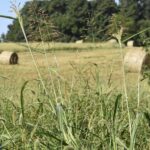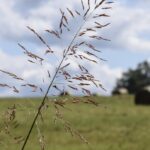On the Lookout for Non-Native Invasive Plants: Johnsongrass
go.ncsu.edu/readext?1074514
en Español / em Português
El inglés es el idioma de control de esta página. En la medida en que haya algún conflicto entre la traducción al inglés y la traducción, el inglés prevalece.
Al hacer clic en el enlace de traducción se activa un servicio de traducción gratuito para convertir la página al español. Al igual que con cualquier traducción por Internet, la conversión no es sensible al contexto y puede que no traduzca el texto en su significado original. NC State Extension no garantiza la exactitud del texto traducido. Por favor, tenga en cuenta que algunas aplicaciones y/o servicios pueden no funcionar como se espera cuando se traducen.
Português
Inglês é o idioma de controle desta página. Na medida que haja algum conflito entre o texto original em Inglês e a tradução, o Inglês prevalece.
Ao clicar no link de tradução, um serviço gratuito de tradução será ativado para converter a página para o Português. Como em qualquer tradução pela internet, a conversão não é sensivel ao contexto e pode não ocorrer a tradução para o significado orginal. O serviço de Extensão da Carolina do Norte (NC State Extension) não garante a exatidão do texto traduzido. Por favor, observe que algumas funções ou serviços podem não funcionar como esperado após a tradução.
English
English is the controlling language of this page. To the extent there is any conflict between the English text and the translation, English controls.
Clicking on the translation link activates a free translation service to convert the page to Spanish. As with any Internet translation, the conversion is not context-sensitive and may not translate the text to its original meaning. NC State Extension does not guarantee the accuracy of the translated text. Please note that some applications and/or services may not function as expected when translated.
Collapse ▲There are a wide variety of non-native invasive plant species that have taken hold in Madison County. These plants cause harm to the environment, as well as potential harm to human, animal, and plant health in the preexisting environment. Some of these damages can be caused by overtaking beneficial native plants in the ecosystem, act as vectors for diseases and other invasive species, such as invasive insects, and are unhealthy or potentially toxic to native animals. In this series, we will discuss identification and control of these prevalent invasive plants.
Identifying Johnsongrass
Johnsongrass (Sorghum halepense) is an invasive, herbaceous perennial grass that is thought to have originated from the Mediterranean, but is now found in temperate areas across the entire world. It can grow anywhere from 2 ½ to 8 feet tall, and grows in dense patches or monocultural stands, overtaking other, more beneficial grasses in those areas. Johnsongrass has a stout stem that ranges in color from pinkish to rusty-red near the base, with long and thin, smooth leaves that can reach up to 2 feet in length and are striped with a white vein through the middle of the leaf. The flowers of this warm-season grass bloom during the summer, and are large purplish-brown to copper in color. The individual flowers are less than an inch in size, but they grow in panicles, which are branched clusters sprouting from the main stem which, in this case, contain multiple flowers. Each panicle of Johnsongrass can grup up to 18 inches long and 9 inches wide, and appear broader at the bottom.
Johnsongrass prefers to grow in moist to moderately wet, loam or silt type soils in full sun areas, but it can grow in a wide range of areas and conditions, such as clay soils, sandy soils, and rocky soils, as well as acidic, alkaline, and neutral soil conditions. Johnsongrass is tolerant of drought conditions as well, but these conditions can cause dangerous poison characteristics if it begins to wilt. Wilting due to drought, heat stress, or frost can cause Johnsongrass to produce hydrogen cyanide within the plant, which can be dangerous to the lives of livestock grazing in infested pastures. Younger plants are more dangerous than mature plants to livestock.
- Daniel Villafruela CC BY-SA 4.0 Image retrieved from NC Extension Gardener Plant Toolbox
- Warren County, NC Cathy DeWitt CC BY 4.0 Image retrieved from NC Extension Gardener Plant Toolbox
- (Warren County, NC) Cathy DeWitt CC BY 4.0 Image retrieved from NC Extension Gardener Plant Toolbox
- Steve Hillebrand Public Domain Mark 1.0 Image retrieved from NC Extension Gardener Plant Toolbox
How It Spreads
Johnsongrass is an invasive plant species that has spread throughout most of the United States, including the entirety of North Carolina. Each plant creates seed heads that can produce hundreds of individual seeds which can be carried on the wind, in water, through livestock (whether through consumption or attached on their hides), commercial seed contamination, purchased hay and grain, and on unwashed rental equipment. These methods, as well as the rhizomes in the root system of Johnsongrass, make this invasive plant species prolific at spreading through the environment. Its rhizomal root systems can cause structural damage to the foundation of homes, walls, and roads while allowing Johnsongrass to spread in dense patches with rapid growth. These dense growth areas can choke out more beneficial vegetation, and even restrict the ability of tree seedlings to grow. The rhizomes create problems during removal attempts, as Johnsongrass can regenerate from any spall piece that is left behind in the soil, either beginning growth again immediately or going dormant to grow later in a variety of different environmental conditions.
Controlling Johnsongrass
As mentioned before, Johnsongrass is a difficult invasive plant species to control thanks to its prolific ability to spread through seed production, its rhizome systems, and its adaptability to a host of environments. Because of its bunchgrass nature, foliar treatments are the only viable option for controlling Johnsongrass. An effective control for this invasive is a 2-3% solution of glyphosate applied in the early summer, before the seeds reach maturity and are able to spread. If you are attempting to treat Johnsongrass later in the year, mow it or cut it down and then allow for 2-3 weeks of regrowth before treating it with the foliar spray. This removes the waxy cuticle that protects the Johnsongrass as it reaches maturity, allowing the herbicide to be more easily absorbed into the plant’s leaf surfaces. For extremely large infestations of Johnsongrass through pasture settings, another successful chemical control can be found in mixing 1 ounce of the herbicide sulfosulfuron (brand name Outrider) in 100 gallons of water, plus 0.5% of a non-ionic surfactant. This mixture can be put in a sprayer attached to the back of a tractor or ATV to be spread in those large quantities, as this mixture can treat approximately one acre of land.
If you have any other questions about identifying or controlling Johnsongrass, please contact the Madison County Cooperative Extension Center at peyton_duckett@ncsu.edu, or (828) 649-2411.
Citations
NC Forest Service, & NCDOT. (2010, March). Sorghum halepense (Johnson Grass). Invasive Species Leaflet.
NC State Extension. (n.d.). Sorghum halepense. North Carolina Extension Gardener Plant Toolbox.







